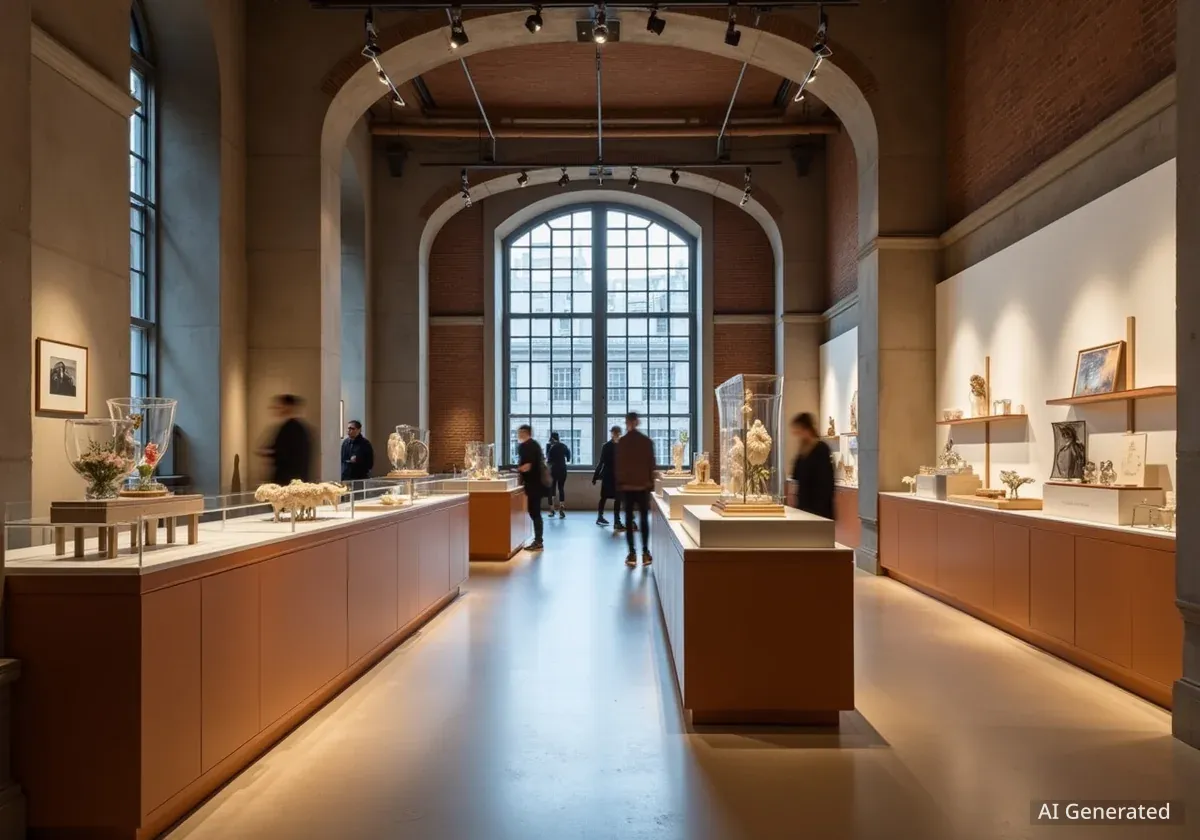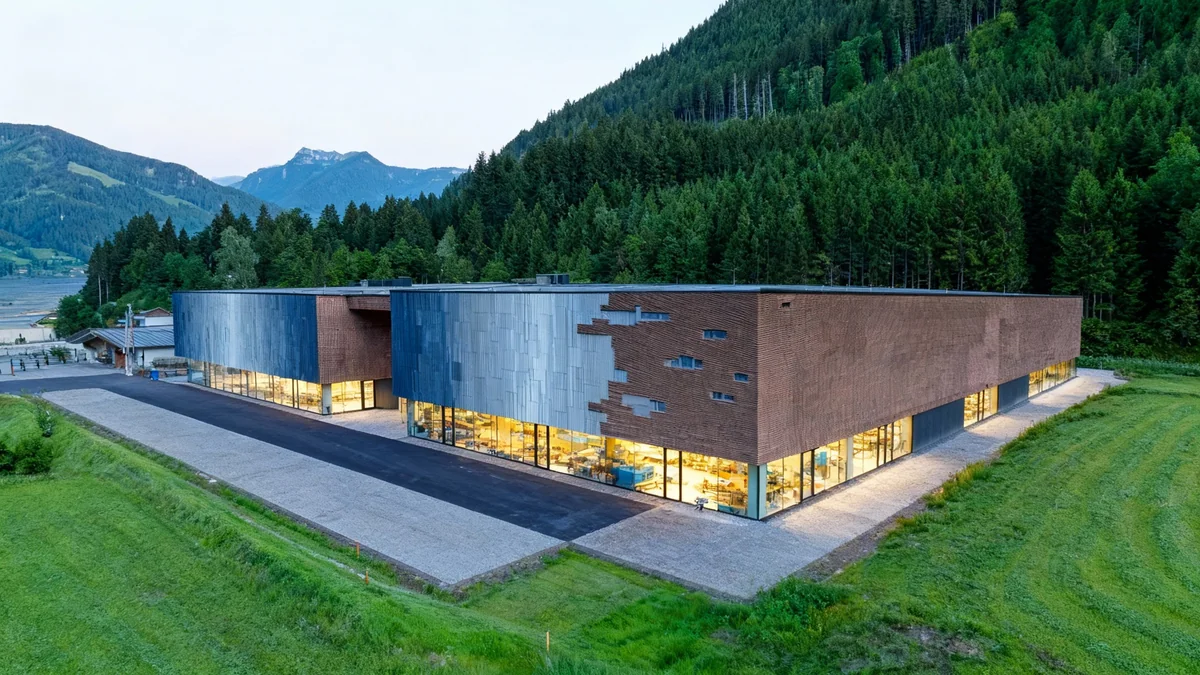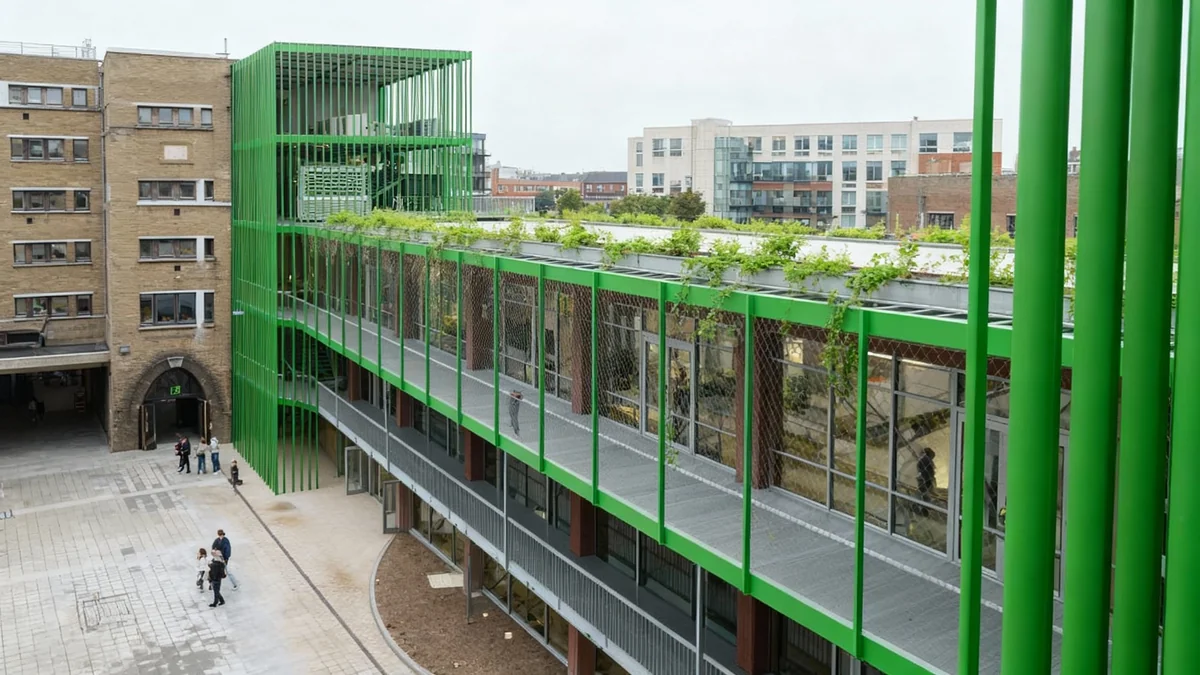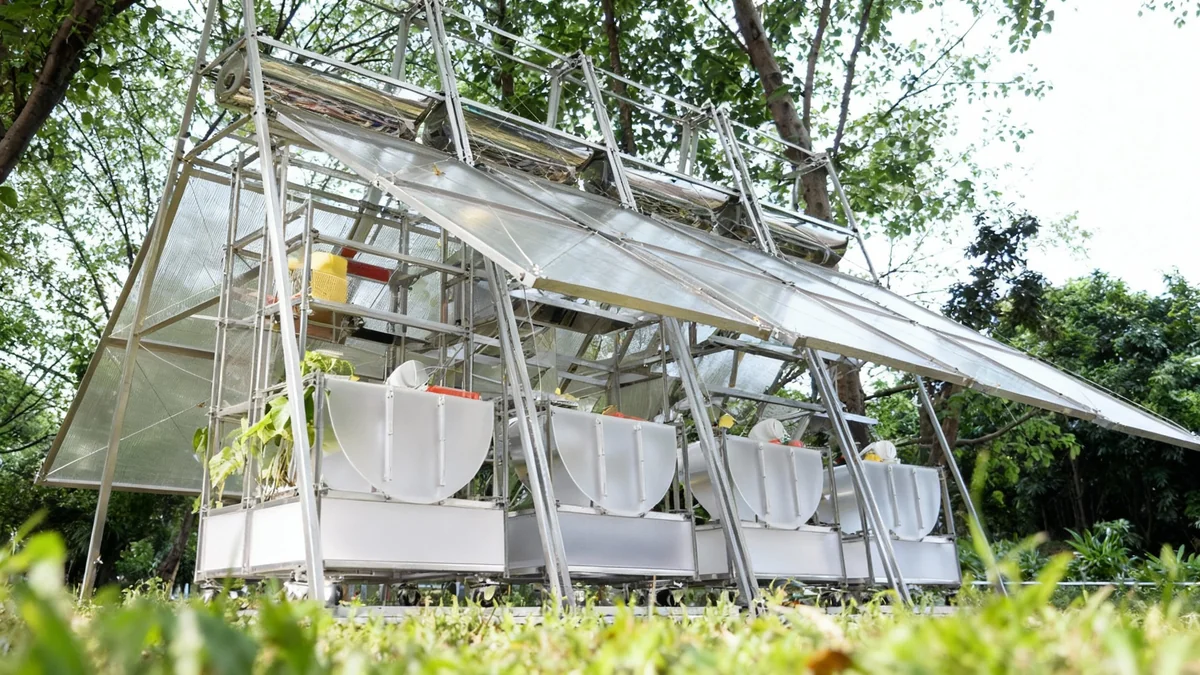The MoMA Design Store in New York's Soho neighborhood has reopened to the public following an extensive renovation by the Brooklyn-based architecture firm Peterson Rich Office. Located at 81 Spring Street, the project focused on restoring the historic 1884 building's original features while introducing a modern, flexible retail environment.
Key Takeaways
- The MoMA Design Store in Soho reopened on September 27, 2025, after a renovation by Peterson Rich Office.
- The project restored the 1884 cast-iron building's historic details, including exposed brick, columns, and tin ceilings.
- A new flexible display system with movable shelving was installed to better showcase products and allow for events.
- The storefront was opened up to Spring Street, with a re-centered entrance and a new mural program to engage the public.
A New Dialogue Between Past and Present
The renovation of the 6,600-square-foot space was guided by a clear brief from the Museum of Modern Art. The primary goal was to create a meaningful connection between the contemporary design products sold in the store and the 19th-century architecture of the building itself.
According to lead architect Nathan Rich, the project had three core objectives. He explained that the team aimed to establish a dialogue with the historic structure, connect with the public by opening the store to the street, and find unique ways to showcase the design objects.
"We got a wonderful brief from MoMA. The first goal was to create a meaningful dialogue between the Design Store and this historic building. The second was to connect with the public, literally bringing the street in. And the third was to showcase the products themselves in special ways."
Restoring Architectural Integrity
A significant part of the renovation involved stripping away decades of additions to reveal the building's original character. The architects at Peterson Rich Office (PRO) focused on uncovering and celebrating authentic details that had been hidden over time.
"What we love about working in older buildings is peeling back the layers," explained architect Miriam Peterson. She noted that previous modifications had concealed important elements. "The ceiling had been dropped, columns were covered, and the facade was blocked off."
The team exposed original cast-iron columns, brickwork, and even sections of the historic tin ceiling. This process allowed the raw textures of the 19th-century construction to serve as a backdrop for the new, modern interior elements.
Fact Sheet: 81 Spring Street
- Year Built: 1884
- Architectural Style: Cast-iron and masonry construction, typical of Soho's historic district.
- Renovated Area: 6,600 square feet
- Key Restorations: Exposed columns, brick walls, tin ceiling, and re-centered entryway.
Designing for Flexibility and Storytelling
Inside the store, the design introduces a contemporary framework intended to be highly adaptable. The layout is organized around a system of flexible casework and display structures that can be easily reconfigured.
This includes perforated steel shelving in MoMA’s signature blue, glass vitrines, and movable islands on casters. The use of casters on the lower level allows the entire area to be cleared for public events, such as talks and product launches.
Introducing New Design Partners
A key feature of the new interior is a perimeter shelving system created by Rareraw, a Korean family-run business. This installation marks the company's debut in the United States and integrates lighting directly into its versatile framework. The system provides a clean, organized backdrop that highlights the products on display.
Nathan Rich emphasized that the store's design is meant to support the items it holds. "Everything here was made by brilliant creators. The store itself should help tell those stories — signage, displays, and layout all work to feature the products in meaningful ways," he said.
Embracing 'Messiness' in Design
A core concept of the renovation was the deliberate contrast between old and new. The architects embraced what Miriam Peterson called the "messiness of the old building." The rough textures of exposed masonry and aged tin ceilings are set against the clean lines of crisp steel shelving and precisely controlled lighting, creating a dynamic visual experience.
Connecting the Store to the Street
A major focus of the project was to strengthen the store's connection to the vibrant Soho streetscape. To achieve this, the architects reopened windows that had been blocked off and, referencing archival drawings, moved the main entrance back to its original central position on the facade.
The building's exterior, previously painted a color called "Afternoon Tea," was restored to a classic black finish with approval from the city's Landmarks Commission. Peterson stated that this "subtle change reframed the interior from the street," creating a stronger visual frame for passersby.
The Modern Mural Program
To further bridge the gap between the interior and the public realm, a new "Modern Mural" program was established on the store's north wall. This rotating art installation will feature works that connect to MoMA's collection and the surrounding urban environment.
The inaugural mural is 'LOVE NYC' by artist Nina Chanel Abney. The large-scale piece serves as a focal point upon entering and is also visible from the street, acting as a public-facing canvas.
"The mural announces from the moment you walk in that this is MoMA. It frames the threshold between street and store, reinforcing the connection between the Design Store and the museum."
MoMA's Expanding Global Retail Presence
The renovation of the Soho location is part of MoMA's broader strategy to enhance its retail experiences. The news follows the recent opening of the museum's first-ever bookstore in Seoul, South Korea.
The Seoul store is located in the city's Gangnam district, an area known for its rapid growth and cultural significance. This expansion reflects the museum's effort to extend its brand and mission to a global audience through curated retail spaces.
By investing in both its historic New York locations and new international venues, MoMA continues to explore how retail can function as an extension of the museum experience, making art and design accessible to a wider public.




